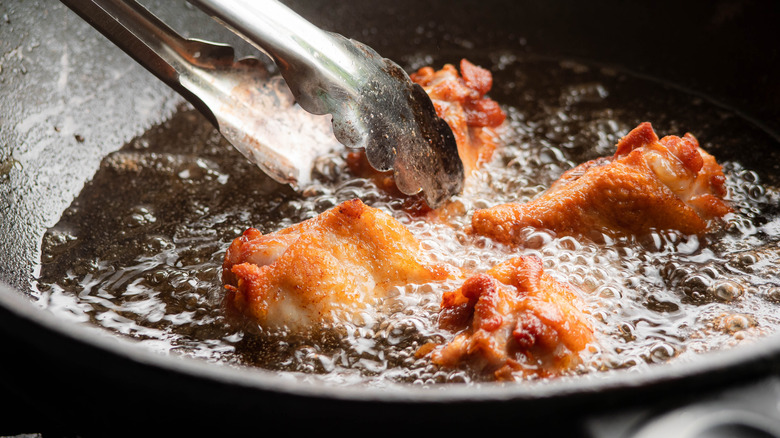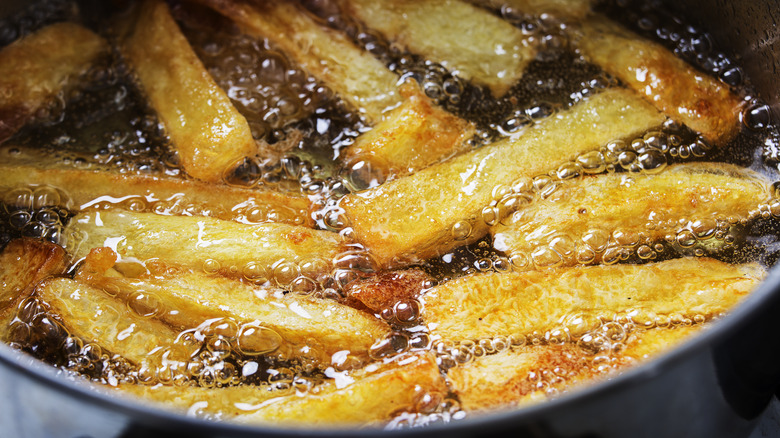Why You Should Avoid Frying Larger Pieces Of Food
There are many mistakes you can make when you're deep frying foods at home like not letting the oil get hot enough, and perhaps more unexpectedly, frying pieces of food that are too large. Some of the more popular fried foods are bite-sized delights like fries and chicken nuggets, simply because frying is a delicate balance of crisping on the outside without burning, yet cooking thoroughly on the inside. Therefore, large pieces of food don't usually work well.
How do you avoid this? Follow your recipe guidelines closely so that whatever food you are frying ends up being cooked thoroughly. For example, if you're frying chicken, butterfly the chicken breast so it's not too thick. If chicken tenders are on tonight's menu, cut the breast into at least four pieces so they can be breaded and fried the right way. And in case you're wondering, frying a whole bird is a complicated process best done in an outdoor turkey fryer. Potatoes are another go-to food for frying, but if you want wedges instead of traditional fries, don't cut them too thick or they won't cook through. For most recipes, each potato should be cut into at least eight to 16 wedges.
More tips for frying foods at home
There are more perks to frying smaller pieces of food, like the food cooking faster. Naturally if you have smaller pieces, the frying time will be shorter so you have more time to spend outside of the kitchen. Other common mistakes are forcing the outside to burn while you wait for the inside to reach the proper temperature, or allowing one side to get too brown while the other side remains raw. Using small pieces will prevent that so your deep-fried goodness is cooked evenly. Also, make sure to use the right size pan so the pieces don't get crowded and each one has enough room to fry.
Once you've cut your ingredients into small pieces for frying, the next important step is knowing what temperature the oil should be. It depends on what you're cooking, but generally, the ideal temperature is between 350 and 375 degrees Fahrenheit. You can use a candy thermometer to check the oil's temperature before frying. If you don't have one of those, you can drop a little flour in the pan and if it bubbles, it's ready! Keep in mind that the temperature of the oil will fluctuate while you're cooking, so keep an eye on it or your last batch of food might not cook like you expect.

